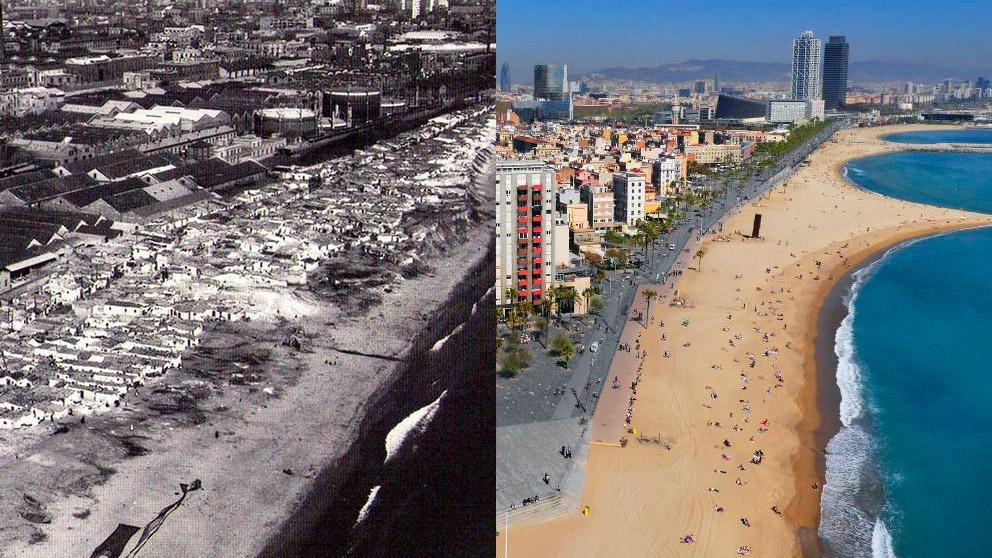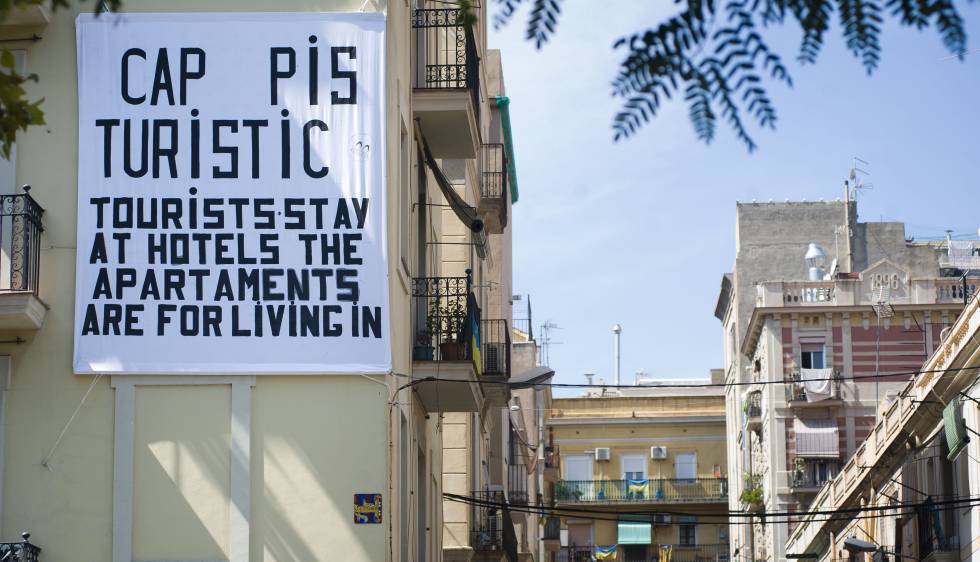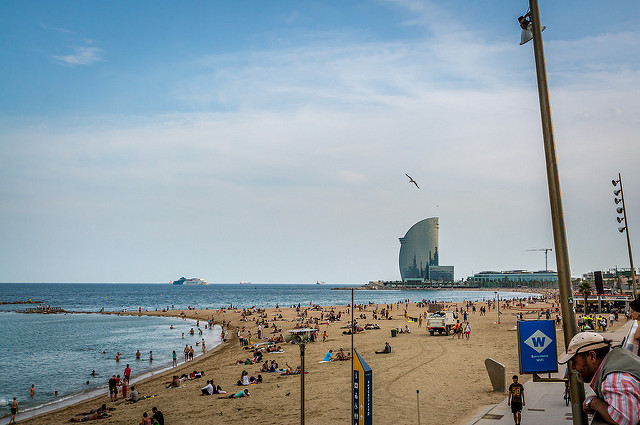
by Melissa García Lamarca
Ever since the 1992 Olympic Games put Barcelona on the map, the exponential growth of tourism has moved hand in glove with the explosion of gentrification across the city. Overnight tourist stays in city hotels more than quintupled from 3.7 million in 1990 to over 20 million in 2016, and today a prominent anti-tourism movement has led to a crackdown on Airbnb-style rentals and multiple plans to reclaim the city for locals who are increasingly being pushed out of their neighborhoods.
A look at some of the key urban interventions in one of Barcelona’s most affected areas—the iconic beachfront neighborhood of La Barceloneta—serves to illustrate a city-wide urban struggle that evolved in defense of the needs and rights of residents over capital and profit. Understanding these dynamics from an urban political ecology perspective shows us how urban environments and social relations are shaped, re-shaped, and who benefits and suffers in the process.
Transforming La Barceloneta’s borders and local environment
Perhaps unsurprisingly, La Barceloneta was a vastly different neighborhood a century ago. Established in 1753 as a working-class fishing village, it has undergone dramatic social, physical and economic transformations that have had a significant impact on its residents. Boxed in to the east by two factories, to the west by commercial docks, to the north by railroad tracks and to the south by the sea, the transformation of these barriers drove important changes that gradually reformulated the neighborhood as a tourist attraction.
Most notable was the makeover of its seaside, which began in 1966 when several shantytown settlements housing up to 15,000 people were demolished in preparation for a military maneuvre overseen by the dictator Francisco Franco.
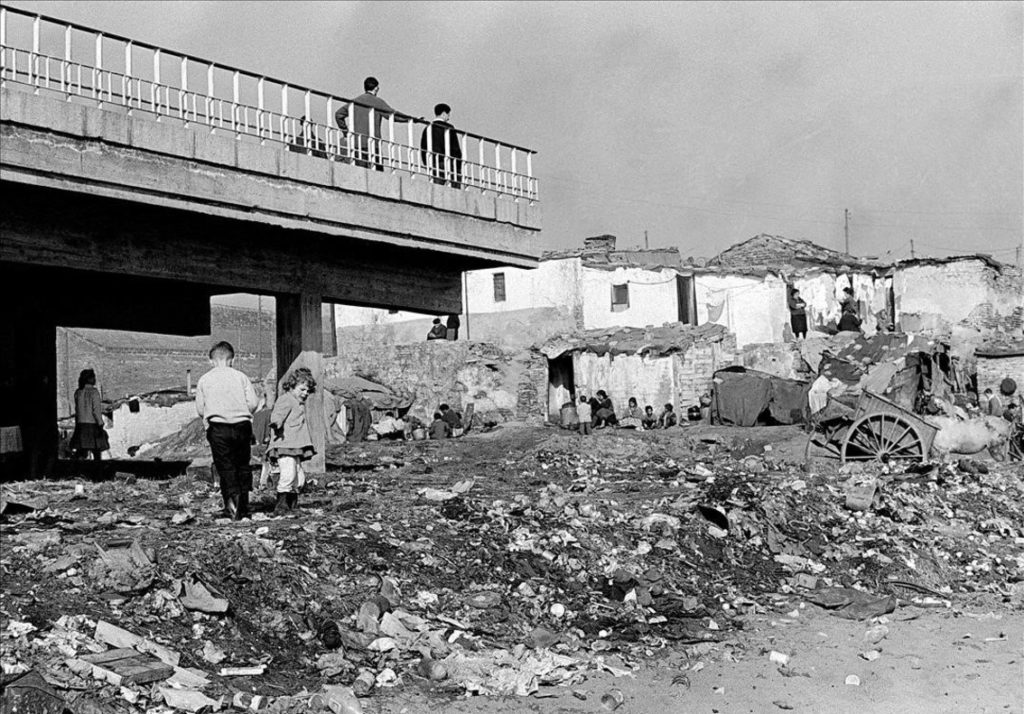
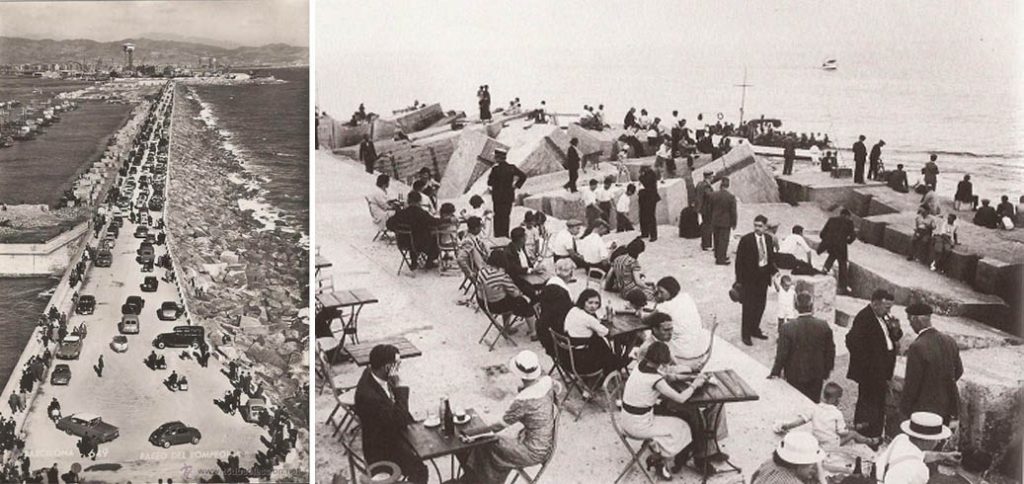
In the next major transformation during the 1980s in preparation for the Olympic Games, waterfront warehouses, restaurants, and a breakwater were torn down. The breakwater in particular was an important site of leisure and intimacy for locals, given the extremely small size of flats in the neighborhood—an average 30 square meters. The subsequent rebuilding of the beach and creation of new public spaces during this period of transformation were both key in drawing visitors and outsiders to the neighborhood.
As a promenade was created along a newly manicured beach, La Barceloneta’s port was also redeveloped. Tourism was prioritized over existing industrial uses. The neighborhood’s historic fishing activity was reduced and the docklands demolished. While the docklands were relocated behind the city’s Montjuïc mountain, fishing and boat repair activity has been relegated to a virtually hidden corner of the port.
Two more recent developments symbolize the prioritization of capital and profit over La Barceloneta’s residents: the Hotel Vela and the luxury yacht club OneOcean Port Vell. Hotel Vela, officially known as the W Barcelona, is a 5-star hotel inaugurated in 2009, whose construction was promoted by the Barcelona port authority—a non-transparent public-private institution—on public land, a mere 20 meters away from the shoreline, in violation of the Spanish Costal Law which prohibits construction less than 100 meters from the seafront.
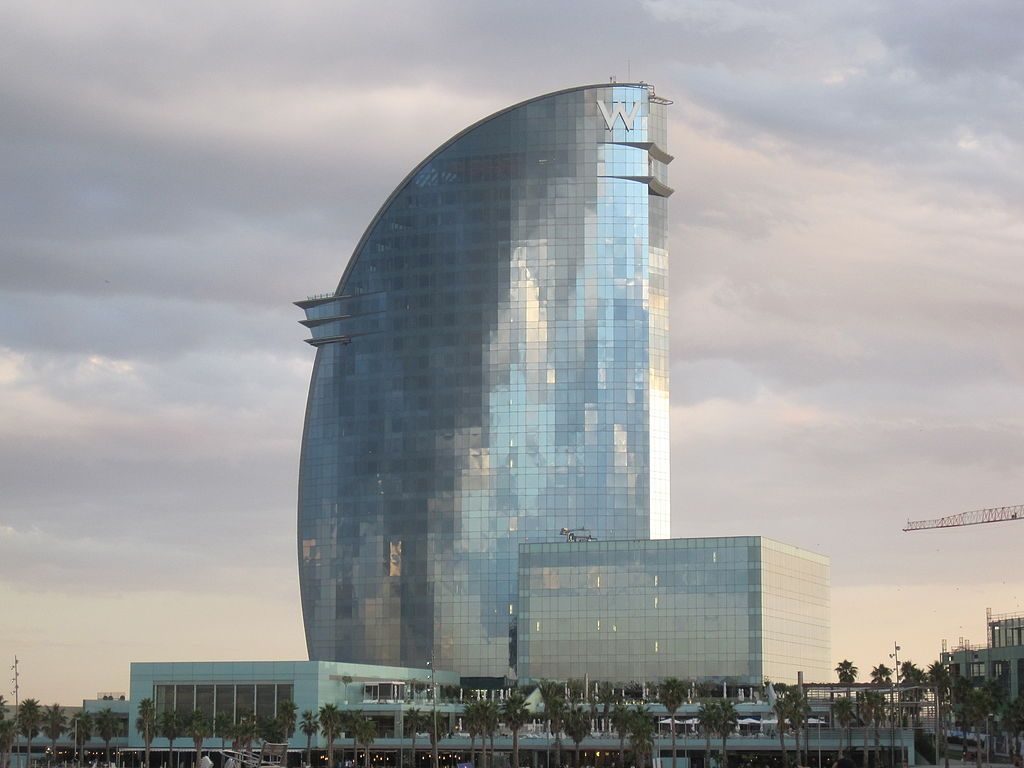
Our walking tour group standing at the entrance to the remainder of La Barceloneta’s fishing port. On the right stands one of OneOcean Port Vell’s buildings on the premise
The members-only club OneOcean Port Vell, unveiled in 2012, visually and physically dominates most of the pedestrianized port, fenced around to prohibit public access from the surrounding public space. The port’s boat repair activity, once dedicated to fishing and shipping boats, now caters to this exclusive and luxury niche market.
We won’t move: struggles for a neighborhood for its residents
These transformations, however, have not taken place without resistance. The dockworkers fought against the closure of the docks; although ultimately unsuccessful, their struggle ensured them decent working conditions and salaries that enabled them to continue living in the neighborhood. A grassroots campaign against the Hotel Vela, complete with a music video, was waged to denounce the new development. It continued, however, unabated.
One successful resistance was born a decade ago from several members of the Miles de Viviendas squat in La Barceloneta together with activists from the La Ostia neighborhood association and the Platform in the Defense of the Barceloneta, when the Barcelona city council approved an urban plan in 2007 that involved installing lifts in the neighborhood’s residential buildings. Due to La Barceloneta’s density and the restrictive dimension of most of its buildings, installing lifts entailed demolishing many of them and ultimately displacing 1,500 families—approximately 20% of the neighborhood. Residents believed that this plan would stimulate real estate speculation and encourage a flood of private capital into the area, processes that would expel many of the neighborhood’s working class residents. In response, activists collaborated with the mapping collective Iconoclasistas to create a didactic information pamphlet denouncing the plan. The campaign with the slogan “we won’t move” was ultimately successful and the city withdrew its plan.
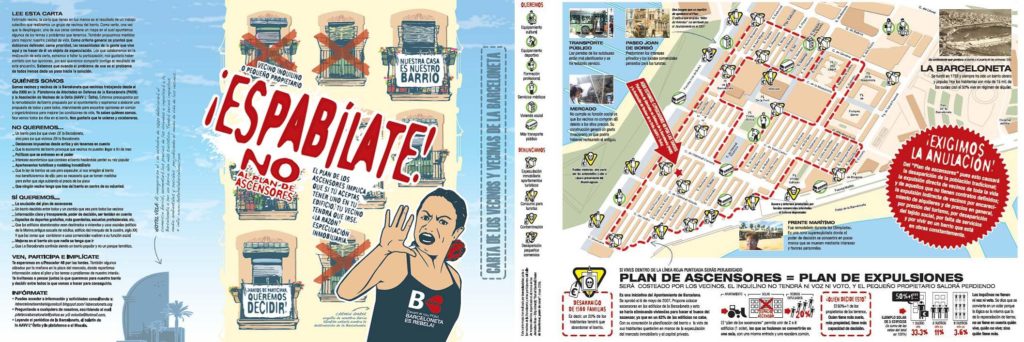
Challenging La Barceloneta’s tourism-gentrification model
Today, urban struggles in La Barceloneta revolve largely around the effects of the unrestrained growth of tourism. Protests exploded in the summer of 2014 when several drunk and naked Italian tourists paraded around the neighborhood without reprisal, sparking a neighborhood mobilization against unregulated tourist flats and disrespectful tourist behavior in open spaces. Indeed, it is not uncommon to see the phrase ‘tourist go home’ spray-painted on walls around La Barceloneta in response to tourist flats and to the trash left behind by tourists on the waterfront and beaches. The collective known as Barceloneta Diu Prou (Barceloneta Says Enough) has been regularly mobilizing over the past three years with other neighborhood and city-wide movements to regulate tourism, participating in groups like the Assembly of Neighborhoods for Sustainable Tourism (ABTS) that seek to abolish tourist flats and stop the new cruise ship terminal proposed for the city, which would significantly increase the number and size of boats and visitors.
In an unprecedented shift of Barcelona’s for-profit model of development catered to visitors over residents, the current city administration has taken measures to abate tourism, such as penalizing illegal tourist flats, imposing a moratorium on new hotels, and raising tourists’ awareness of their inappropriate behavior and environmental impact. But given the decades of growth that the city has experienced underneath that model, a change of development patterns and drivers is slow and difficult to implement.
The experience of La Barceloneta highlights the importance of understanding the long history of mobilization and solidarity in gentrifying neighborhoods where residents might have seen some improvements in their open and public spaces and benefited enhanced access to them, but continue to face the threat of record high flat rental prices, displacement and loss of local culture, and overcrowded plazas, waterfront and beaches. Gaining insight on the impacts of past urban transformations, especially from local residents themselves, is critical to forging more socially just and equitable models, policies and interventions.
This post originally appeared on the Barcelona Lab for Urban Environmental Justice and Sustainability (BCNUEJ) blog.
This post draws on insights from a BCNUEJ walking tour led by local residents and activists: Emma Alari, Santiago Gorostiza, Irmak Ertör and Marina Monsonís.
Melissa García Lamarca is a post-doctoral researcher at BCNUEJ. As a researcher and housing rights activist in Barcelona, she is particularly interested in the financial dynamics driving the rise of the rental housing market and what this means in the context of job and housing precarity. Her research with BCNUEJ’s project on green gentrification (GREENLULUs) explores questions of green growth and social equity, the financial dynamics behind urban greening and community resistance to greening projects.
